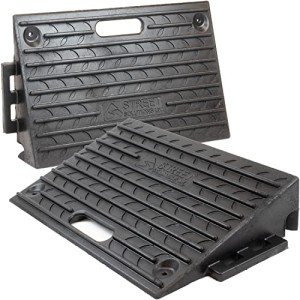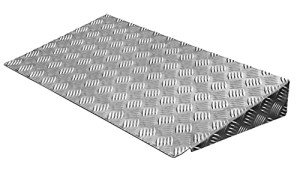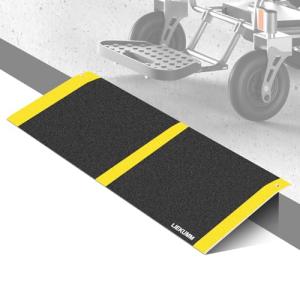In the ongoing quest to create more inclusive and accessible environments, the installation of heavy duty rubber kerb ramps has emerged as a significant step forward. These ramps are designed to assist individuals with mobility challenges, including those using wheelchairs, walkers, and other mobility aids, to navigate urban and suburban landscapes with greater ease and safety. This guide delves into the benefits, installation, and maintenance of heavy duty rubber kerb ramps, highlighting their role in enhancing accessibility and safety for all.
The Importance of Accessibility
Accessibility is a fundamental right that ensures individuals with disabilities can participate fully in society. According to the World Health Organization, approximately 15% of the global population lives with some form of disability. In many urban and suburban areas, physical barriers such as kerbs and steps can significantly impede mobility, making it difficult for these individuals to access public spaces, buildings, and transportation. Heavy duty rubber kerb ramps play a crucial role in breaking down these barriers, promoting independence and inclusivity.
Benefits of Heavy Duty Rubber Kerb Ramps
-
Enhanced Mobility
- Ease of Use: Heavy duty rubber kerb ramps are designed with a gradual slope, making it easier for individuals using wheelchairs, walkers, and other mobility aids to transition from the sidewalk to the street or vice versa.
- Stability: The non-slip surface of these ramps provides a secure and stable footing, reducing the risk of accidents and injuries.
-
Durability and Longevity
- Material Quality: Made from high-quality rubber, these ramps are resistant to wear and tear, UV radiation, and extreme weather conditions, ensuring a long lifespan.
- Low Maintenance: Unlike concrete or metal ramps, heavy duty rubber kerb ramps require minimal maintenance, making them a cost-effective solution for both public and private spaces.
-
Aesthetic Appeal
- Blend with Surroundings: Available in various colors and finishes, these ramps can be customized to match the aesthetic of the surrounding environment, enhancing the overall look of the area.
- Unobtrusive Design: The low profile and compact design of these ramps make them less obtrusive, ensuring they do not detract from the visual appeal of the area.
-
Versatility
- Multiple Applications: Heavy duty rubber kerb ramps can be installed in a variety of settings, including residential driveways, public parks, commercial properties, and public transportation hubs.
- Portability: Some models are portable, making them ideal for temporary installations or for individuals who need to use ramps in different locations.
Installation Process
The installation of heavy duty rubber kerb ramps is a straightforward process that can be completed by professionals or, in some cases, by property owners. Here are the steps involved:
-
Assessment and Planning
- Site Evaluation: Assess the area where the ramp will be installed to determine the appropriate size and slope.
- Permit Requirements: Check with local authorities to ensure compliance with building codes and regulations.
-
Preparation
- Surface Preparation: Ensure the surface is clean, level, and free of debris.
- Marking: Use chalk or paint to mark the area where the ramp will be installed.
-
Installation
- Positioning: Place the ramp in the marked area, ensuring it is aligned correctly.
- Securing: Use bolts, screws, or other fasteners to secure the ramp to the ground. Some models come with pre-drilled holes for easy installation.
- Leveling: Use a level to ensure the ramp is even and stable.
-
Final Inspection
- Testing: Test the ramp to ensure it is secure and functions as intended.
- Adjustments: Make any necessary adjustments to ensure the ramp meets safety and accessibility standards.
Maintenance and Care
While heavy duty rubber kerb ramps are designed to be low maintenance, regular care can extend their lifespan and ensure they remain in optimal condition. Here are some maintenance tips:
-
Regular Cleaning
- Debris Removal: Clear the ramp of leaves, dirt, and other debris to prevent slipping hazards.
- Pressure Washing: Use a pressure washer to clean the ramp, but avoid using harsh chemicals that could damage the rubber.
-
Inspection
- Check for Damage: Regularly inspect the ramp for signs of wear, such as cracks, splits, or loose fasteners.
- Tighten Fasteners: Ensure all bolts and screws are tight and secure.
-
Repairs
- Minor Repairs: Address minor issues, such as small cracks or scratches, by using a rubber repair kit.
- Replacement: If the ramp shows significant damage or wear, consider replacing it to maintain safety and functionality.
Frequently Asked Questions (FAQs)
Q: Are heavy duty rubber kerb ramps suitable for all types of mobility aids?A: Yes, heavy duty rubber kerb ramps are designed to accommodate a wide range of mobility aids, including wheelchairs, walkers, and mobility scooters. The gradual slope and non-slip surface ensure safe and easy transitions.
Q: Can heavy duty rubber kerb ramps be installed on uneven surfaces?A: While heavy duty rubber kerb ramps are designed to be installed on level surfaces, they can be adapted to accommodate slight unevenness. It is important to ensure the ramp is stable and secure, and professional installation may be recommended for more challenging surfaces.
Q: How long do heavy duty rubber kerb ramps last?A: With proper installation and regular maintenance, heavy duty rubber kerb ramps can last for many years. The durability of the rubber material and resistance to environmental factors contribute to their longevity.
Q: Are heavy duty rubber kerb ramps compliant with accessibility standards?A: Yes, heavy duty rubber kerb ramps are designed to meet or exceed accessibility standards, including those set by the Americans with Disabilities Act (ADA) and other relevant regulations. It is important to consult local guidelines and regulations during the installation process.
Q: Can heavy duty rubber kerb ramps be installed in cold climates?A: Yes, heavy duty rubber kerb ramps are designed to withstand a wide range of temperatures, including cold climates. The rubber material remains flexible and does not become brittle in low temperatures, ensuring the ramp remains safe and functional year-round.
Heavy duty rubber kerb ramps are a vital component in the effort to create more accessible and inclusive environments. Their benefits, including enhanced mobility, durability, aesthetic appeal, and versatility, make them an excellent choice for both public and private spaces. By following the proper installation and maintenance procedures, these ramps can provide a safe and secure solution for individuals with mobility challenges, promoting independence and inclusivity. As communities continue to prioritize accessibility, the installation of heavy duty rubber kerb ramps will play an increasingly important role in breaking down physical barriers and ensuring equal access for all.







